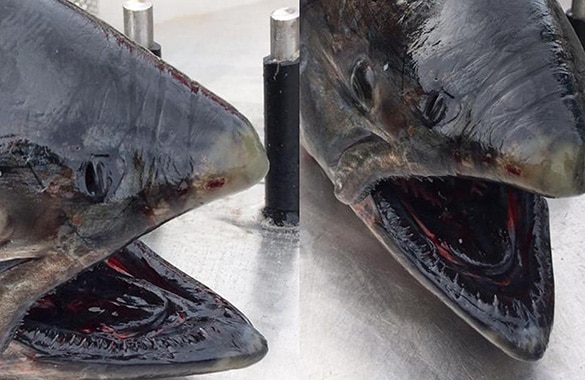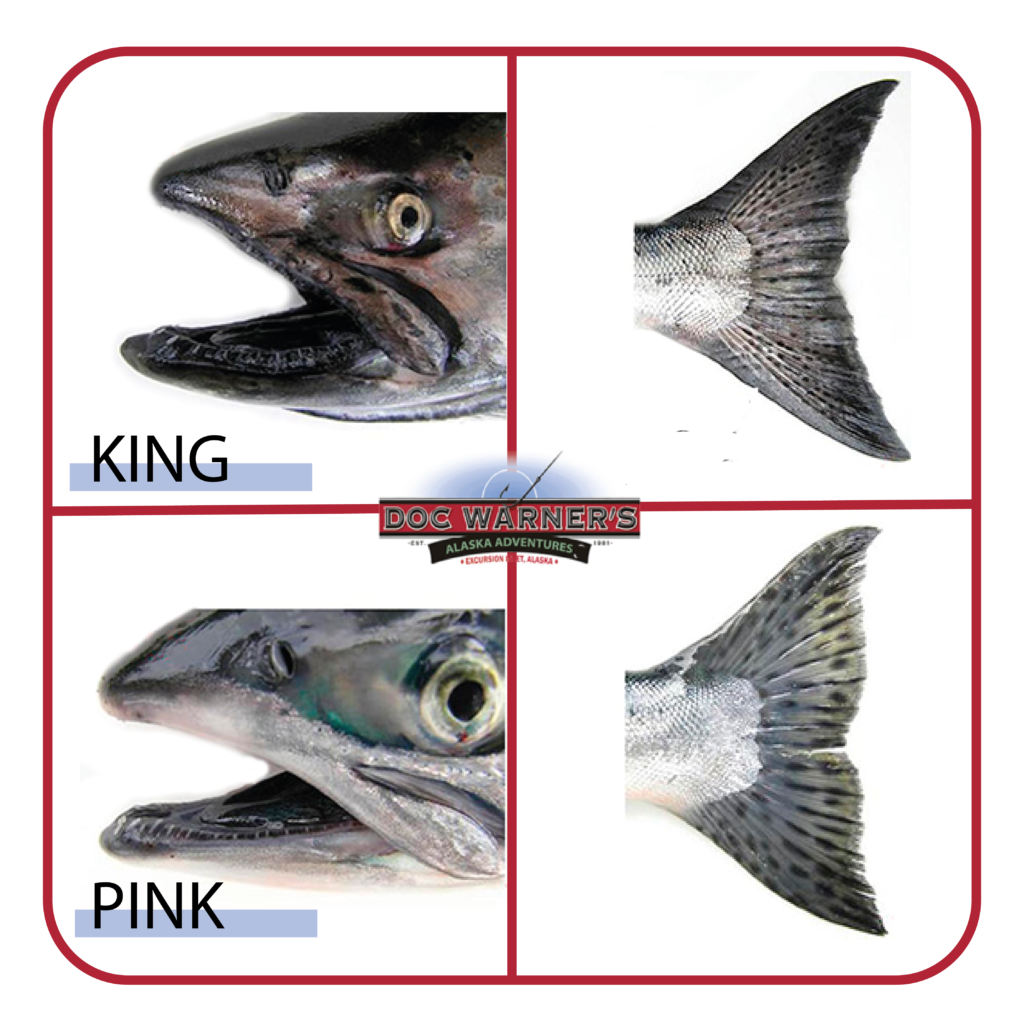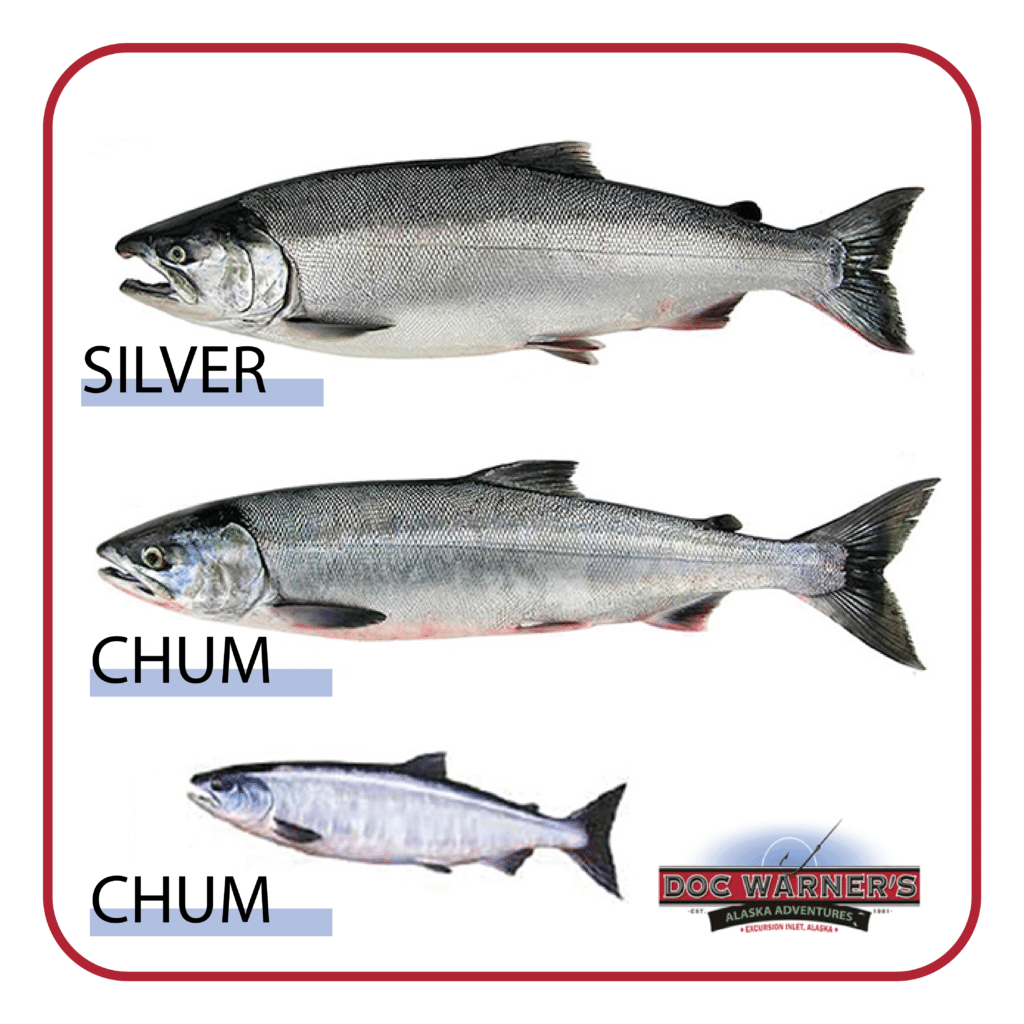The limits for Silver Salmon (Coho), Pink Salmon (Humpy), Chum Salmon (Dog), and Red Salmon (Sockeye) are six per species per guest per day. For King Salmon (Chinook), the limits are set annually and change throughout the year. They can be anywhere from five or six per season with one or two catches per day down to one or two per season. King limits will be given to you when you arrive at the lodge. These limits make it important for our guests to know how to identify salmon species.

King or Not
Once you have caught a salmon, the first step is to decide if you have landed a King or not. Being able to properly know how to identify salmon species will help you avoid costly mistakes. Use these identifying characteristics to help.
- Mouth: The inside of a King’s mouth will be completely black. That means the tongue, gums, lips, and upper and lower portions of the mouth will be black. It looks like a black paintball exploded in the salmon’s mouth.

- Tail: It will look like tinfoil has been embedded in the tail and it has precise and defined black spots. The juvenile king is most often confused with a pink salmon because of similar scale patterns.
Once you have determined that it is a king, you must measure its length. Kings have a minimum requirement of 28 inches or they must be released back into the water.
If you don’t have a king, remove the hook and add it to your catch. Make sure you keep track of your numbers. You might be surprised at how quickly you can reach your salmon limits.
Use the following information to help you identify the other salmon you catch.
Pink Salmon
Mouth: The lower jaw will most likely be black. However, the upper jaw will have whites and other colors that will help distinguish it from a king salmon.
Tail: The spots on the tail will be oblong and blotchy.

Silver Salmon
- Mouth: Look at the lower gum line exactly where the teeth protrude from the gums; this will be white. It will look like someone took a white marker and drew a white line along with their teeth. Some pinks will have white toward the back of the jaw, but a silver salmon will have a consistent white line along with the entire set of bottom teeth.
- Tail: The tail might have a few scattered spots, usually on the upper lobe, with silver streaks.

Chum Salmon
- Eye: The pupil is very large in comparison with the iris and is much bigger than the pupil of the other types of salmon.
- Body: Lay the fish on its side and look down the side of the fish. You will see stripes that run from dorsal to belly along the body of the salmon. The stripes have earned it the nickname of Tiger salmon.
Red Salmon

- Shape: The body resembles the shape of a torpedo with a snubbed nose.
- Body: Lay the fish on its side; Reds have very precise scales in a very nice pattern.
Remember, the first question is whether or not you have a King salmon. The distinguishing marks of a king make it easy to identify. At the end of your first day, bring your catch back to the dock and the Doc staff will run through the identifying marks on each fish you catch. We also have regulation books that you are welcome to take with you on the water.
